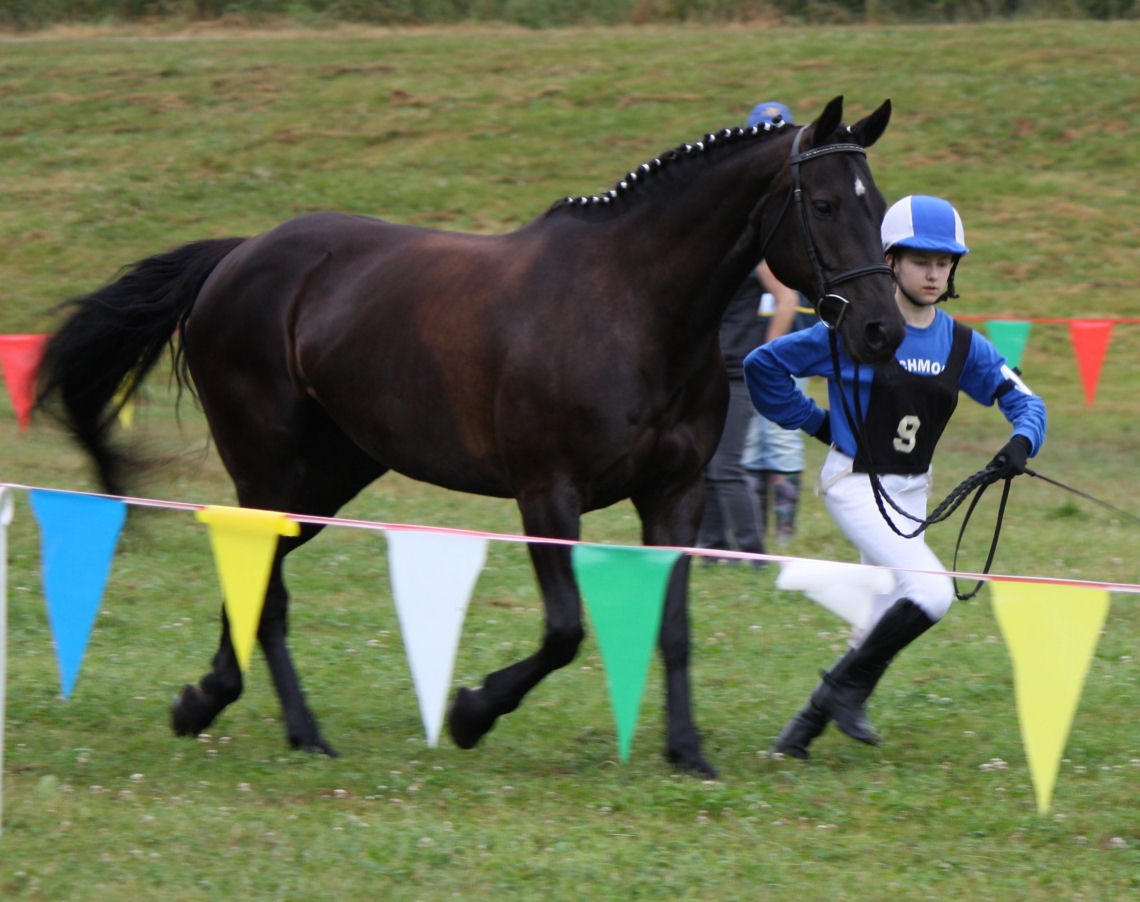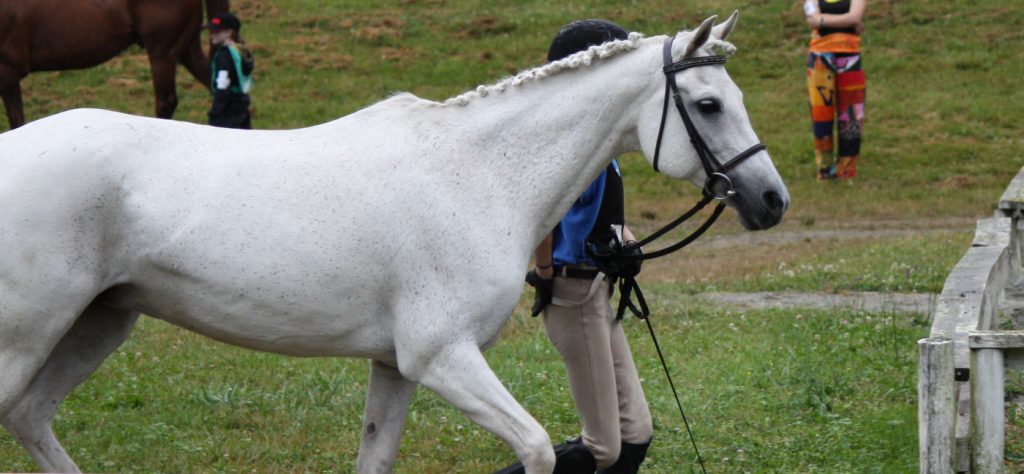Horsemanship Level 2: Leading at the Trot
At level 1 we asked that you demonstrate how to safely lead your horse for the simple purpose of moving him about from stall, to cross-ties, to arena. You can review this here. For level 2 you will also need to demonstrate leading at the trot.
4. Lead in hand, walk & trot.
The most common reason for needing to lead your horse at the trot is to detect lameness and gait faults. This might be done for the vet during an exam or at an event as a soundness check. In-hand classes at shows also ask for the horse to be trotted to show off his obedience and the quality of his gaits.
When trotting for a soundness exam the same safety rules apply as when leading at the walk: have the excess lead-rope folded, not looped, in your left hand; use your right hand to lead the horse; and jog beside your horse's left shoulder so he doesn't step on you or move into your space. For the trot you will want a slightly looser lead than at the walk to allow for his larger movement. This will also keep you at a safer distance.
Most horses will trot if you start to jog beside them. If your horse doesn't immediately move into a trot, use a verbal command, or a cluck. You can carry a long whip in your left hand and tap his quarters behind you if he is particularly reluctant.
The Trot-up
The jog or trot-up is a formal display of soundness done at national and international calibre horseshows. In three day eventing the horse is jogged before judges and vets on the first and last day of the event. The horse is immaculately groomed and shown in a snaffle bridle. It is also a chance to show off the rider's style, and these days some riders do the jog in Ascot hats and high heels.
For the formal jog, start as you would for a regular trot, with the excess reins folded in your left hand, and your right hand holding both reins 6-12 inches below the bit. As your horse starts to trot, drop your right hand and and place it behind your back, holding the reins and whip in your left. This allows your horse to move freely and demonstrates that you aren't dragging or holding him back.
The larger your horse, the more you'll have to move to get him to show off. Take long, springy, rhythmic strides which will encourage him to do the same.
next week: grooming
Thank you!
Huge thanks to Matt, Kristen, Janet, Marius, Monica, Walker, Brittany, Crystal, and Chris who devoted part of their sunny long weekend to tackling the to-do list at Red Colt on Sunday. We hacked back the encroaching shrubbery in the arena and grass paddocks, demoralized the buttercups, repaired fences, built gates, and made frames to support the bathtub troughs in the back fields. It was a hot and sweaty, but satisfying day, and I'm sure the horses all thanked you when they were turned out in the large fields for the first time this year!
Note that there are no Cavaliere programs happening this weekend, but we return the following weekend with a triple header of Cavaliere Class on Saturday June 1st and Intro to Mounted Combat and Mounted Combat on Sunday June 2nd. See you there!
Jennifer Landels, Maestra di ScuderiaAcademie Duello Cavaliere Program
